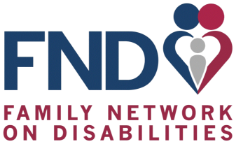INformation Hub
Creating Collaborative Action Teams: Working Together for Student Success
Creating Collaborative Action Teams: Working Together for Student Success
Introduction to the Collaborative Action Team Process
These Web pages give an overview of the Collaborative Action Team process and link to the set of materials, Creating Collaborative Action Teams: Working Together for Student Success.
The Collaborative Action Team Process
The Collaborative Action Team process is a set of concepts, activities, and resources that individuals, school districts and other organizations can use to develop a partnership between home, school, community, and students at the local level. These teams identify pressing issues in the school community and take action to address those issues with the purpose of promoting student success.
Stages and Steps in the Process
- Stage 1: Getting Started
Introduce the Process, Gather School Community Information, Plan the First Steps - Stage 2: Mobilizing the Team
Establish Representative Membership, Determine Communication Ground Rules, Build Common Understanding, Support Consensus Decision making, Identify Shared Leadership Opportunities - Stage 3: Setting Direction
Agree on a Vision, Identify and Prioritize Issues, Develop a Mission Statement, Set Team Goals, Communicate Your Message - Stage 4: Taking Action
Develop Strategies, Determine Necessary Tasks, Establish Evaluation Methods, Monitor Progress, Expand Network Opportunities - Stage 5: Reviewing and Refining
Assess Team Effectiveness, Celebrate Your Successes, Increase Effectiveness and Impact
Stages and Steps in the Process
Getting Started
A Collaborative Action Team must take time to do some “groundwork” to get the team started on the right foot. Assessing the school community environment to ensure that conditions are right to start a team is one preliminary step. Another is to make certain all the right elements are present to support a healthy collaboration.
This stage involves learning about the Collaborative Action Team process, getting your team organized, and building a working team. Sometimes, the people on your team will be meeting for the first time. Other times, you may already be working together and want to learn the process before taking action. Steps in this stage include the following:
- Introduce the Process
- Gather School Community Information
- Plan the First Steps
This stage provides the foundation for success. Complete this stage before you move on to any other.
Mobilizing the Team
Your Collaborative Action Team must now decide how to operate — including how the team will communicate and make decisions. You must begin to think about individual people to include on the team to ensure that the team is representative and diverse.
This stage involves deciding who should be part of the team and how the team will operate. Steps include the following:
- Establish Representative Membership
- Determine Communication Ground Rules
- Build Common Understanding
- Support Consensus Decision Making
- Identify Shared Leadership Opportunities
Setting Direction
A Collaborative Action Team must have a vision for what the team wants to produce. This vision will guide team members as they move into action. As your team develops a team mission and goals, the members begin getting a clearer picture of the potential results they might achieve.
This stage involves creating a team identity and purpose, and agreeing on goals. Steps include the following:
- Agree on a Vision
- Identify and Prioritize Issues
- Develop a Mission Statement
- Set Team Goals
- Communicate Your Message
Taking Action
As your Collaborative Action Team implements the action plan, the team will require monitoring and maintenance. Team members will find that some projects fall into place easily, while others require hard work and constant attention. The team may also find issues that need to be addressed in order to continue to flourish. At the same time, however, team members will begin to see positive results as the team progresses and change starts to happen.
This stage involves getting more specific about how you will achieve goals, share responsibilities, and monitor your progress. Steps include the following:
- Develop Strategies
- Determine Necessary Tasks
- Establish Evaluation Methods
- Monitor Progress
- Expand Network Opportunities
Reviewing and Refining
As the team goes through the process, members need to take time to reflect on the team’s challenges and to consider what changes to make in the future. This helps the team become stronger and more effective over time. Your Collaborative Action Team will also have many successes to celebrate. Team members should be recognized for their contributions.
This stage involves celebrating achievements, reviewing what has worked and what has not and making adjustments for the next steps. Stage 5 steps include the following:
- Assess Team Effectiveness
- Celebrate Your Successes
- Increase Effectiveness and Impact
Guide to Materials
The Creating Collaborative Action Teams materials include a Guide, a Toolkit, and handout and transparency masters. These “how to” materials will guide you through the entire process.
Although the Collaborative Action Team process has a suggested order, you need not always follow it. The materials are designed for flexibility, so you can follow the order that meets your needs.
The materials are meant to be used by local team members. Stage 1: Getting Started helps you plan more specifically how to facilitate and coordinate your team. As your team goes through the process, many different team members will help lead the team by coordinating work, facilitating meetings and discussions, and recording information. Although all team members should have access to these materials, the people who are coordinating, facilitating, and recording will be the ones who use them the most.

Guide
The Guide explains the Collaborative Action Team process in detail. It described the five stages in the process and the steps a team takes during each stage. it helps the team understand what needs to be accomplished to achieve collaboration that promotes student success. The Guide also includes a review of the literature on collaboration and references to additional resources, organizations, and publications that can complement these materials.
Download:
The Collaborative Action Team Guide is available in PDF format.Toolkit
The Toolkit serves as a companion to the Guide. It provides a variety of “tools” — activities, resources, and information — that you can use during each stage of the process. The Guide references the Toolkit items that can help at each point in the process. You may not need everything in the Toolkit to develop a Collaborative Action Team and reach your goals — pick and choose Toolkit items depending on your needs.
Many of the items will help local team members organize and facilitate team meetings and plan the work that needs to happen between meetings. You can also use the Toolkit items with smaller groups and committees, instead of the whole team. Every step in the Collaborative Action Team process has at least one corresponding Toolkit Activity that will help your team build specific skills. Each Toolkit Activity contains ready-to-use instructions and materials the facilitator can use. It identifies goals for meetings and suggests timeframes and formats for activities. Facilitators may tailor the activity to meet the team’s needs. The Toolkit also includes a Troubleshooting Guide to help teams as they encounter issues along the way and a section with Icebreakers and Energizers for group activities.
Toolkit Masters
The Toolkit Masters consist of transparency masters and/or handout masters for each Toolkit Activity. They also include a set of Action Planning masters you will use throughout the Collaborative Action Team process.
Like the Guide and Toolkit, the set of Toolkit Masters is available to you in its entirety in PDF format. The transparency masters are also available as Microsoft PowerPoint slide presentations and the handout masters and Action Planning masters as Microsoft Word templates.
Download Toolkit Masters:
- Transparency Masters (PDF format)
- Transparency Masters: MS PowerPoint files (ZIP format)
- Handout Masters (PDF format)
- Handout Masters and Action Planning Masters: MS Word templates (ZIP format)
- Action Planning Masters (PDF format
SOURCE ARTICLE: SEDL Archive/American Institutes for Research
Give us a call at (727) 523-1130 or (800) 825-5736 or request a callback by clicking below.
311 South Missouri Ave, Clearwater, FL 33756
(727) 523-1130
(800) 825-5736

